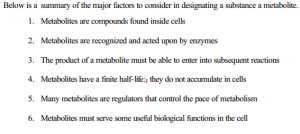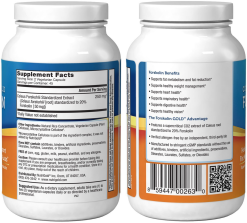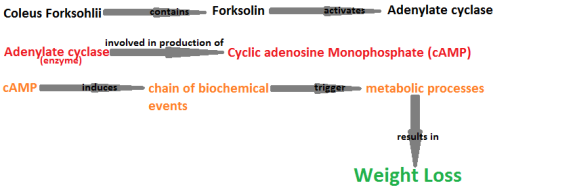
What you need to know
Metabolite – products of natural, cellular, enzyme-catalyzed reactions. (Click here to few the criteria for a compound to be classified as a metabolite)

Endo vs exo – endo meaning inside, or from within(of the organism/cell/etc); exo meaning outside, or from the outside (of the organism/cell/etc)
Perturbation – a small change in the regular movement of an object (‘Perturbation’ n.d)
Elucidation – to explain or clarify something (‘Elucidate’ n.d)
I decided to give the definitions of the words that I, myself had to look up in order to really understand what metabolomics entails.
Now, I can tell you that metabolomics is the study of metabolites. This involves: the identification and measurement of metabolites in a cell/tissue/bio-fluid, the characterization of the effect or external or internal irregular movement on metabolite composition and networks, the clarification of the underlying biological processes, which all lead to a new diagnostic/prognostic/therapeutic tool.
There are three metabolomics techniques: nuclear magnetic resonance (NMR) spectroscopy, mass spectrometry (MS), and capillary electrophoresis. In this study we will focus on NMR and MS.
Mass spectrometry
is an analytical tool used to measure the molecular mass of a sample. Mass spectrometry provides accuracy in that large biomolecules ae measured within an accuracy of 0.01% of the total molecular mass of the sample, and small organic molecules can be measured within an accuracy of 5ppm or less of the molecular mass. Tandem mass spectrometers are mass spectrometers that have multiple analyzers. Tandem mass spectrometers are used to generate structural information, examples of these include gas chromatography – mass spectrometry (GC-MS), and liquid chromatography – mass spectrometry (LC-MS). Mass spectrometry has the following applications: biotechnology, pharmaceutical, clinical, environmental, and geological. Think about what we discussed and see if you can identify how mass spectrometry may be applicable in those fields. (Ashcroft n.d)
GC-MS
This tool contains: (1) a gas chromatographer (GC) which separates chemical mixtures into pulses of pure chemicals and, (2) a mass spectrometer (MS) which, yes, you guess it, identifies and quantifies the chemicals. (Simonich n.d)
Oregon State University created a beautiful animation which shows exactly how this works. Click here.
To analyze the results, one can compare the data of the mass spectrum of an unknown compound to a library of mass spectra of known compounds. This way you can identify what the compound is. For example, if you have a mass spectrum of the pesticide DDT (from an air sample containing DDT), and you also have the mass spectrum of retene (from air containing retene), and thirdly, you have the mas spectrum of an unknown compound, you can examine the spectra and determine the source of the unknown compound. Oregon State University has a wonderful illustration of this, using graphs. The example given, is exactly the type of things that Environmental Chemists study. (Simonich n.d)

Urinary metabolite analysis can be performed on newborns to determine whether they have an enzyme deficiency, lack coenzymes, or whether they have substrate overload. This can be done by using GC-MS along with other techniques, the results can then be compared with individuals of the same age who are used as healthy controls. Urinary metabolite analysis can aid in the diagnosis of numerous inborn errors of metabolism (IEMs). Some IEMs include: hyperammonemias, lactic acidemias, and organic acidemias. (Tomita and Nishioka 2005)

LC-MS
This works the same way as GC-MS. It’s the same principle, the only difference is that liquid chromatography is used to do the separating of mixtures, rather than gas chromatography.
LC-MS can be used to measure homocysteine. What is homocysteine? Homocysteine is a risk factor for occlusive arterial or venous disease. This means that LC-MS can be used in the detection and prevention of this disease. (Arndt 2004)

According to various sources, Lee and Kerns in 1999, & Molina-Martin et al. in 2005, LC-MS has been instrumental in many drug discoveries in the past decade.

All we’ve got left to do is discuss the geological application of mass spectrometry. For the most part, I am an environmental biologist, I am not a geologist. Therefore, the most I will say is that according to the intellectuals at The University of Leeds, the geological application is mass spectrometry lies in oil composition…what does that mean? (Ashcroft n.d) Well, think about it!

Now let’s look at NMR Spectroscopy.
Magnetic isotopes possess what is known as spin. Spin is nuclei processing angular moment. (Nerz-Stormes n.d) Only magnetic isotopes can experience NMR. (Hornak 1997) Yes, this means that there are non-magnetic isotopes. Some examples of magnetic isotopes are 13C, 1H, 19F,14N, 17O, 31P, and 33S. (Nerz-Stormes n.d) NMR has been described as the scientific phenomenon which occurs when magnetic isotopes are immersed in a static magnetic field and exposed to an oscillating magnetic field. (Hornak 1997)

Spectroscopy is the study of the interaction of electromagnetic radiation with matter.
NRM spectroscopy is the study of the physical, chemical, and biological properties of matter. (Hornak 1997) When a population of magnetic nuclei are exposed to an oscillating magnetic field, the nuclei become aligned in the expected and fixed number of orientations, and this is the basis upon which NRM spectroscopy works. (Nerz-Stormes n.d) Ms. Maryellen Nerz-Stormes gives us a nice example over here using 1H.

So…how can we use this?
Allll kinda how!!
- Chemists can use it to study the chemical structure of molecules (Hornak 1997)
- NRM spectroscopy is being used to determine protein structure (as opposed to using x-ray crystallography) (Hornak 1997)

- NRM spectroscopy ca be used to determine the structure of solids (Hornak 1997)

- NRM spectroscopy can be used to measure diffusion coefficients (Hornak 1997)

- There is a lot of research going on with regards to using NRM spectroscopy to detect and characterize cardiovascular diseases. This is being doing by using NRM spectroscopy to detect changes in lipoprotein and metabolic profiles (respectively). (Yabsley, Homer-Vanniasinkam and Fisher 2012)
- Using the NRM spectroscopy of 1H scientists have been able to identify and establish different metabolic patterns of various neural cell types. (Urenjak et al. 1993) Now that they have been able to create such a database, it means that we will be able to identify neurological disorders and how they affect certain neural cells by examining their metabolic patterns. This will allow us to detect neurological disorders much more quickly and even provide a stepping stone to the rectification or management of the problem.

- So said, so done. NRM spectroscopy is used to study brain tumors, Alzheimer’s disease, seizures and associated disorders, strokes, and depression, just to name a few things. (Aetna.com n.d)

Don’t limit yourselves. In terms of what I’ve written thus far, there is so much more I could write about the various way I think Metabolomics techniques can be used….and well if you know me, you know my mind has already gone above and beyond….so much so that I feel like I wanna become a Metabolomist…(is that a thing?)
“Physicians and scientists around the world are beginning to realize that metabolic profiling will have a significant impact on the diagnosis, prevention and monitoring of many diseases,” says Charles Burant, M.D., Ph.D., director of the Michigan Metabolomics and Obesity Center, and the Dr. Robert C. and Veronica Atkins Professor of Metabolism at the U-M.

References
Aetna.com,. 2014. ‘Magnetic Resonance Spectroscopy (MRS)’. Accessed November 30. http://www.aetna.com/cpb/medical/data/200_299/0202.html.
Arndt, T. 2004. ‘Total Plasma Homocysteine Measured By Liquid Chromatography-Tandem Mass Spectrometry With Use Of 96-Well Plates’. Clinical Chemistry 50 (4): 755-757. doi:10.1373/clinchem.2003.029686.
Ashcroft, Alison. 2014. ‘An Introduction To Mass Spectrometry’. Astbury Centre For Structural Molecular Biology, The University Of Leeds. Accessed November 30. http://www.astbury.leeds.ac.uk/facil/MStut/mstutorial.htm.
‘Elucidate’. 2014. Cambridge Dictionary. Cambridge: Cambridge University Press. Accessed November 30. http://dictionary.cambridge.org/dictionary/british/elucidate.
Harris, Edward. 2014. Biochemical Facts Behind The Definition And Properties Of METABOLITES. Ebook. 1st ed. U.S. Food and Drug Administration. Accessed November 30. http://www.fda.gov/ohrms/dockets/ac/03/briefing/3942b1_08_harris%20paper.pdf.
Hornak, Joseph P. 1997. Basics Of NMR. [Rochester, N.Y.: Rochester Institute of Technology, Center for Imaging Science.
Lee, Mike S., and Edward H. Kerns. 1999. ‘LC/MS Applications In Drug Development’. Mass Spectrom. Rev. 18 (3-4): 187-279. doi:10.1002/(sici)1098-2787(1999)18:3/4<187::aid-mas2>3.0.co;2-k.
Manna, Soumen. 2014. An Introduction To Metabolomics. Ebook. 1st ed. Maryland: National Cancer Institute at the National Institutes of Health. Accessed November 30. https://ccrod.cancer.gov/confluence/download/attachments/80677524/Soumen%20Manna.pdf?version=1&modificationDate=1339615308313&api=v2.
Manna, Soumen. 2014. An Introduction To Metabolomics. Ebook. 1st ed. Maryland: National Cancer Institute at the National Institutes of Health. Accessed November 30. https://ccrod.cancer.gov/confluence/download/attachments/80677524/Soumen%20Manna.pdf?version=1&modificationDate=1339615308313&api=v2.
Molina-Martin, Manuel, Aranzazu Marin, Alfonso Rivera-Sagredo, and Alfonso Espada. 2005. ‘Liquid Chromatography-Mass Spectrometry And Related Techniques For Purity Assessment In Early Drug Discovery’. Journal Of Separation Science 28 (14): 1742-1750. doi:10.1002/jssc.200500107.
Nerz-Stormes, Maryellen. 2014. ‘The Basics Nuclear Magnetic Resonance Spectroscopy’.Brynmawr.Edu. Accessed November 30. http://www.brynmawr.edu/chemistry/Chem/mnerzsto/The_Basics_Nuclear_Magnetic_Resonance%20_Spectroscopy_2.htm.
‘Perturbation’. 2014. Cambridge Dictionary. Cambridge: Cambridge University Press. Accessed November 30. http://dictionary.cambridge.org/dictionary/british/perturbation.
Simonich, Staci. 2014. ‘GCMS – How Does It Work? | Unsolved Mysteries Of Human Health | Oregon State University’. Unsolvedmysteries.Oregonstate.Edu. Accessed November 30. http://unsolvedmysteries.oregonstate.edu/MS_05.
Simonich, Staci. 2014. ‘Data Analysis | Unsolved Mysteries Of Human Health | Oregon State University’. Unsolvedmysteries.Oregonstate.Edu. Accessed November 30. http://unsolvedmysteries.oregonstate.edu/MS_06.
Tomita, M, and T Nishioka. 2005. Metabolomics. Tokyo: Springer.
Urenjak, Jutta, Steve Williams, David Gadian, and Mark Noble. 1993. ‘Proton Nuclear Magnetic Resonance Spectroscopy Unambiguously Identifies Different Neural Cell Types’. The Journal Of Neuroscience. http://www.jneurosci.org/content/13/3/981.full.pdf+html.
Yabsley, Warren, Shervanthi Homer-Vanniasinkam, and Julie Fisher. 2012. ‘Nuclear Magnetic Resonance Spectroscopy In The Detection And Characterisation Of Cardiovascular Disease: Key Studies’. ISRN Vascular Medicine 2012: 1-11. doi:10.5402/2012/784073.




















